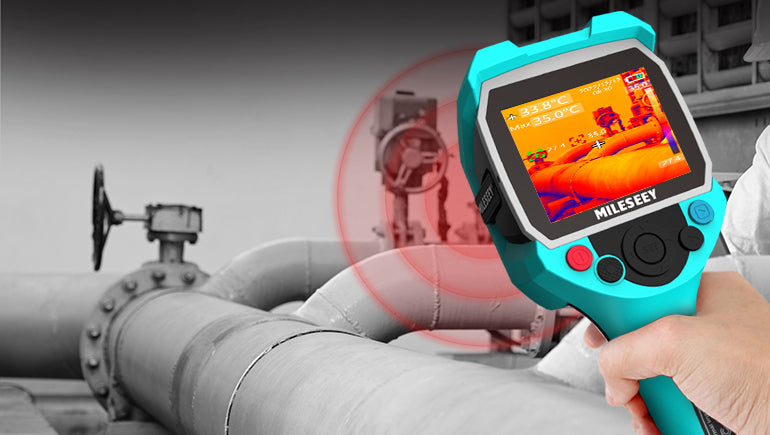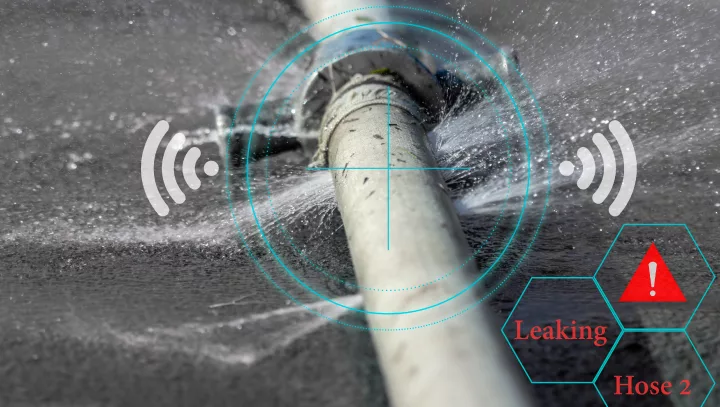The Importance of Routine Water Leak Detection for Long-Term Home Protection
The Importance of Routine Water Leak Detection for Long-Term Home Protection
Blog Article
Innovative Solutions for Very Early Discovery of Water Leakages in Buildings and Framework
From advanced leak discovery modern technologies to the deployment of IoT sensors for real-time tracking, the landscape of leakage avoidance is advancing rapidly. Automated water flow analysis systems are reshaping exactly how leaks are determined and resolved, leading the way for a positive technique to water leakage discovery.
Advanced Leakage Discovery Technologies
Advanced leakage detection innovations, equipped with sophisticated sensing units and algorithms, play a crucial function in swiftly identifying and pinpointing water leaks in different setups. These modern technologies use a mix of acoustic, thermal, and electro-magnetic noticing techniques to discover leaks accurately. Acoustic sensors identify the audio of running away water, permitting specific localization of the leakage resource. Thermal imaging finds temperature level adjustments brought on by water leakage, supplying one more effective method for leak identification. Electromagnetic sensors can recognize adjustments in electro-magnetic fields triggered by water, providing yet another layer of leakage discovery ability.

IoT Sensors for Real-Time Monitoring
In the realm of contemporary water leakage discovery, the integration of IoT sensors for real-time tracking stands for a critical improvement in boosting aggressive leak detection capabilities. These sensors use continual surveillance of water supply, providing real-time data on water flow rates, pressure variations, and temperature modifications. By leveraging IoT modern technology, these sensing units can detect even the smallest anomalies in water usage patterns, enabling early identification of potential leaks before they escalate into major problems.
IoT sensing units send information to a central system, where innovative formulas examine the details and create informs or alerts when abnormalities are found. This real-time surveillance capacity enables homeowner or facility managers to promptly address leaks, decreasing water damage, lowering repair prices, and preserving water sources.
Moreover, IoT sensors can be incorporated with structure administration systems, enabling for automated feedbacks to identified leakages, such as turning off water shutoffs or triggering pumps to reduce the influence of leakages. In general, the implementation of IoT sensing units for real-time monitoring significantly boosts the effectiveness and effectiveness of water leakage detection in structures and facilities.
Artificial Intelligence Algorithms for Leakage Forecast

One trick benefit of utilizing artificial intelligence for leakage prediction is its ability to constantly learn and boost its precision with time. As more data is collected and fed right into the algorithm, it can improve its forecasts and adapt to transforming conditions, inevitably boosting the reliability of leakage detection systems.
In addition, artificial intelligence formulas can help in recognizing subtle indicators of leaks that might go unnoticed by typical tracking approaches. water leak detection. By evaluating intricate data collections in real-time, these algorithms can give early cautions and alerts, enabling for punctual intervention and preventative maintenance to alleviate potential water look these up damages and linked costs
Making Use Of Thermal Imaging for Leak Discovery
Thermal imaging technology uses a promising strategy for discovering water leakages in various systems and frameworks. By utilizing infrared radiation and temperature differences, thermal imaging cameras can identify concealed leakages that are not easily visible to the nude eye. When water escapes from pipes or structures, it commonly changes the temperature of the bordering area, producing temperature level differentials that thermal cameras can capture. These temperature abnormalities are after that translated into visible pictures, highlighting the precise place of the leakage.
One of the essential advantages of thermal imaging for leak detection is its non-intrusive nature. Unlike standard techniques that may need getting into walls or floors to find leaks, thermal imaging enables non-destructive screening. This not just conserves time and reduces costs yet additionally decreases disturbance to the structure or framework being analyzed. In addition, thermal imaging can promptly scan big areas, giving an extensive introduction of prospective leak resources in a prompt manner. On the whole, using thermal imaging modern technology enhances the efficiency and precision of water leak detection, making it a valuable tool for keeping the integrity of buildings and infrastructures.
Automated Water Circulation Analysis Solutions
How can computerized water flow evaluation systems transform the discovery and management of leakages in various systems and frameworks? Automated water flow evaluation systems offer an aggressive method to leakage detection by constantly keeping track of water circulation rates and patterns. By establishing standard data, these systems can swiftly identify variances that may suggest a leakage, enabling timely treatment to stop considerable damage.
These systems use innovative algorithms to evaluate real-time information and provide instant signals when anomalies are identified, permitting quick activity to be taken. Furthermore, computerized water circulation analysis systems can be integrated visit this website with structure monitoring systems or IoT systems, enhancing general effectiveness and making it possible for remote monitoring capabilities.
Moreover, the data gathered by these systems can be utilized for predictive maintenance purposes, helping to determine prospective powerlessness in the facilities before leaks occur. Overall, the implementation of computerized water circulation evaluation systems can dramatically boost leakage detection redirected here and management practices, inevitably bring about set you back savings, decreased water wastage, and raised sustainability in structures and facilities.

Conclusion
In final thought, the assimilation of innovative leakage discovery modern technologies, IoT sensing units, artificial intelligence formulas, thermal imaging, and automatic water circulation evaluation systems offers innovative remedies for very early detection of water leaks in buildings and facilities. These technologies enable real-time tracking, prediction of leakages, and efficient detection methods to prevent water damages and wastefulness. Applying these remedies can aid in keeping the stability and sustainability of water systems in various settings.
Report this page